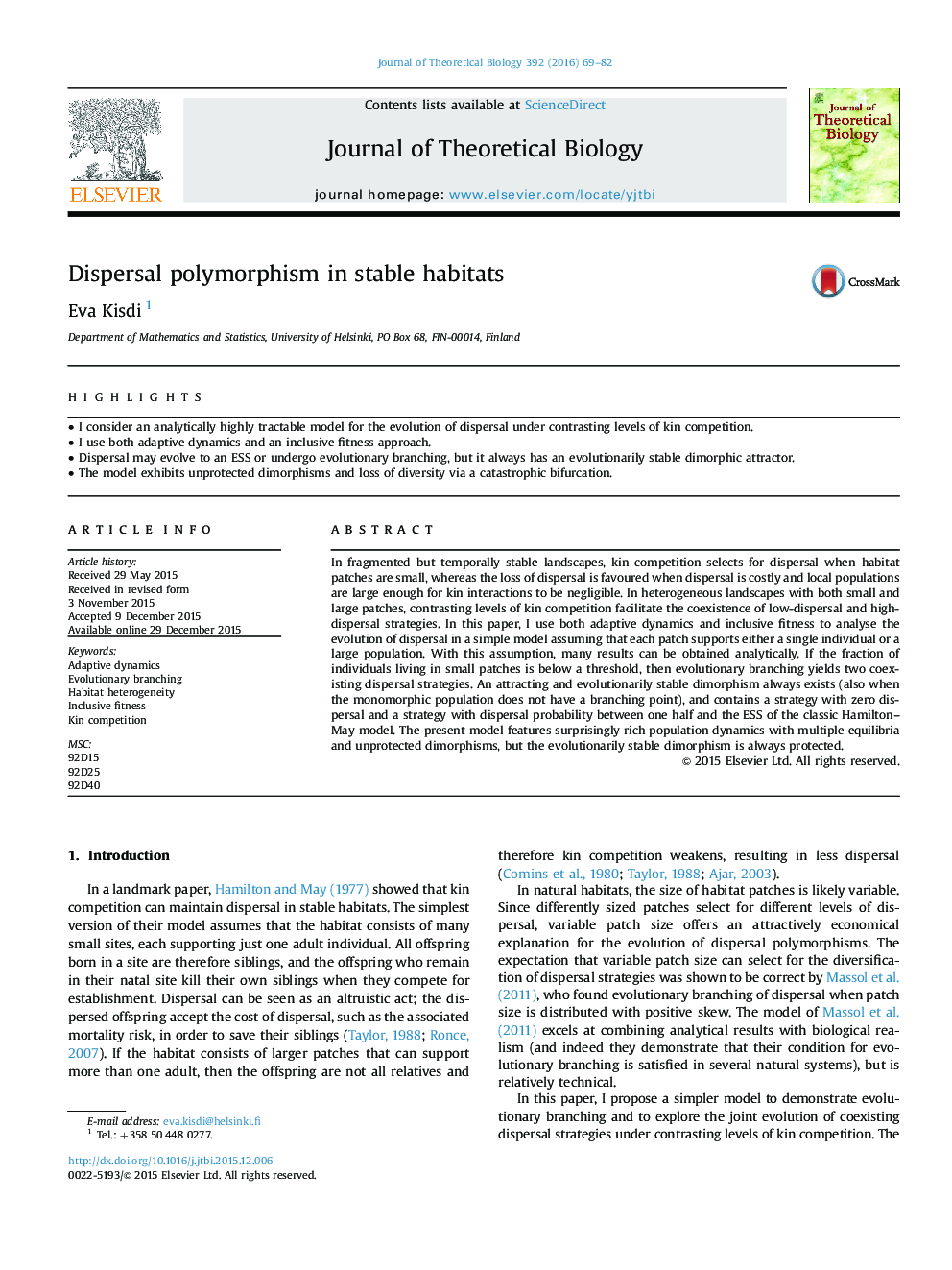| کد مقاله | کد نشریه | سال انتشار | مقاله انگلیسی | نسخه تمام متن |
|---|---|---|---|---|
| 4495913 | 1623818 | 2016 | 14 صفحه PDF | دانلود رایگان |
• I consider an analytically highly tractable model for the evolution of dispersal under contrasting levels of kin competition.
• I use both adaptive dynamics and an inclusive fitness approach.
• Dispersal may evolve to an ESS or undergo evolutionary branching, but it always has an evolutionarily stable dimorphic attractor.
• The model exhibits unprotected dimorphisms and loss of diversity via a catastrophic bifurcation.
In fragmented but temporally stable landscapes, kin competition selects for dispersal when habitat patches are small, whereas the loss of dispersal is favoured when dispersal is costly and local populations are large enough for kin interactions to be negligible. In heterogeneous landscapes with both small and large patches, contrasting levels of kin competition facilitate the coexistence of low-dispersal and high-dispersal strategies. In this paper, I use both adaptive dynamics and inclusive fitness to analyse the evolution of dispersal in a simple model assuming that each patch supports either a single individual or a large population. With this assumption, many results can be obtained analytically. If the fraction of individuals living in small patches is below a threshold, then evolutionary branching yields two coexisting dispersal strategies. An attracting and evolutionarily stable dimorphism always exists (also when the monomorphic population does not have a branching point), and contains a strategy with zero dispersal and a strategy with dispersal probability between one half and the ESS of the classic Hamilton–May model. The present model features surprisingly rich population dynamics with multiple equilibria and unprotected dimorphisms, but the evolutionarily stable dimorphism is always protected.
Journal: Journal of Theoretical Biology - Volume 392, 7 March 2016, Pages 69–82
